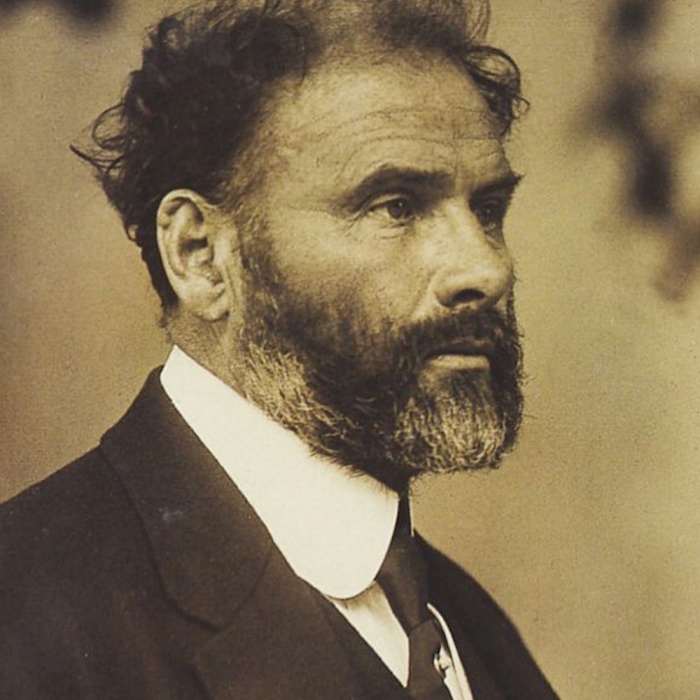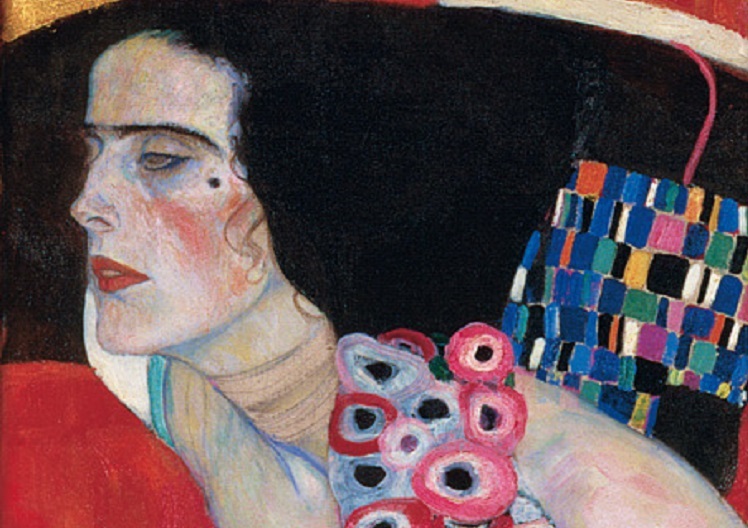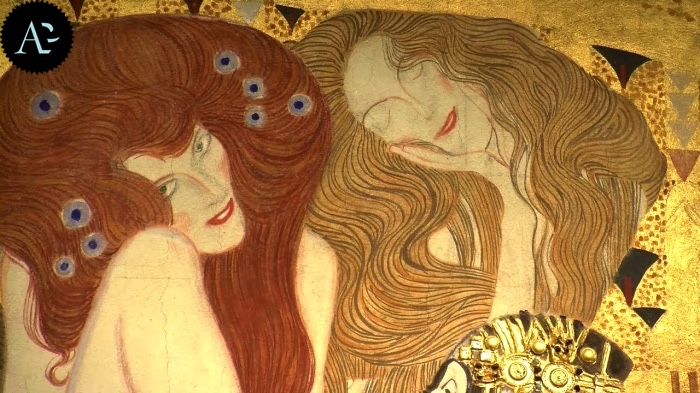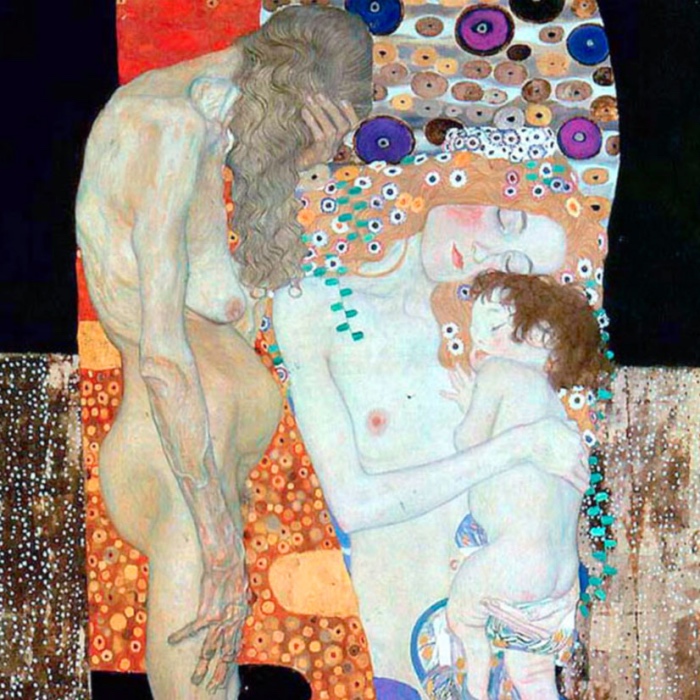Gustav Klimt: 5 things to know

5 THINGS TO KNOW ABOUT GUSTAV KLIMT
Gustav Klimt was the protagonist of the Vienna Secession movement, and the driving force of a renewal of European art.
He painted fascinating society women wrapped in thick decorations, but he was also the author of bright mosaics and majestic allegories.
5 things to know about Gustav Klimt

Klimt, Salomè – Museo Ca’ Pesaro, Venezia (dettaglio)
1. WHEN GUSTAV KLIMT WAS BORN
Gustav Klimt was born in Baumgarten, near Vienna, in 1864 where he spent his quiet but poor childhood.
His father was a goldsmith and Gustav learnt from him the art of precious metals manufacturing.
At the age of 15 Gustav was admitted at the School of Art and Craft of the Austrian Museum of Applied Arts, where he stood out in each subject, but especially he emerged as a capable painter and portrait painter.
2. KLIMT AND THE “COMPANY OF ARTISTS”
Gustav Klimt created along with his brother Ernst and his friend Franz Matsch the “Company of Artists”.
It was an artistic and professional association, which allowed those artists to obtain important commissions, such as the decorations in the Burgtheater and in the Kunsthistorisches Museum in Vienna.
In addition, the association allow Klimt to obtain his first recognitions.
In 1890, in fact, he received the Emperor award for a painting representing the stalls area of the old Burgtheatre crowded with 130 faithful portraits of well-known contemporary celebrities.

Klimt, il Fregio di Beethoven (dettaglio)
3. KLIMT AND THE “VIENNA SECESSION”
After his brother Ernst died in 1892, Gustav went into a deep depression and that event caused the end of the “Company of Artists”.
Gustav Klimt began thinking his artistic experience over and approached a group of artists who rejected from the Academy of Fine Arts, in order to form an autonomous group with its own site, the “Vienna Secession”.
4. KLIMT AND THE GOLDEN PHASE
Klimt became one of the founding members and president of the “Vienna Secession”.
The aims of the group were a complete fusion of arts, going beyond Academic compositions and renovating art.
For the 14th“Vienna Secession” exhibition Klimt painted the “Beethoven Frieze” directly on 3 walls of a room.
This work launched the “golden phase”.
In that period Klimt’s works were characterised by the use of gold, decorative symbols and line and stylized figures.
5. KLIMT IN VENICE
As a result of the crisis of the “Vienna Secession”, Klimt came close to the WienerWerkstatte (Vienna Workshops) andhe wascommissioned to decorate theStoclet Palace in Brussels, and, at the same time, he was dedicated exhibitions and gained recognitions.
In 1910 Klimt took part in the 9th Venice Biennale (Biennale di Venezia), and there he was dedicated a personal exhibition.
He began his production of works that belonged to flower Klimt drew his inspiration from paintings by Matisse and from oriental decorative patterns.
Gustav Klimt died in 1918, aged 56, and his pupil Egon Schiele painted him on his deathbed.

Klimt, Le età della vita – La Galleria Nazione, Roma
Follow me on:
About me
In this blog, I don't explain the history of art — I tell the stories that art itself tells.


